Recommendation 8 | Principle 5: Technological neutrality
Do not impose any technological solutions on citizens, businesses and other administrtaions that are technology-specific or disproportionate to their real needs.
Solutions
| List of all available solutions that implement this recommendation |
|---|

|
As the CAMSS library provides a list of different technological specifications, it helps public administrations to choose solutions that would not be restrictive. |
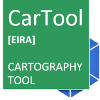
|
The CarTool does not impost the use of any specific technology and the 'Create a solution' function is fully based on open standards. |

|
As the CEF BDTI provides a list of tools that the Member States can select for their pilots, the building block does not impose any technological solutions. |

|
The CEF Context Broker provides the FIWARE NGSI API, which is a RESTful API, hence enabling various applications to provide updates and get access to context information (i.e. does not impose any technological restrictions). |

|
The CAV, as data model, does not impose the use of any particular software, thus, ensures technological neutrality |

|
CPSV-AP, being a data model, does not impose the use of any particular software, hence ensuring technological neutrality. |

|
The CSSV, as data model, does not impose the use of any particular software, thus, ensures technological neutrality |

|
By developing common specifications and data models, rather than a system, CISE, and in turn its users, remains technologically neutral. |
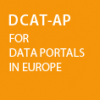
|
DCAT-AP allows data catalogues to describe their dataset collections using a standardised description, while keeping their own system for documenting and storing them, hence ensuring technological neutrality. |

|
eArchiving encourages the use of open source software, which is technologically neutral. |

|
The eDelivery building block encourages technological neutrality as it prescribes the use of an open AS4 specification but not any specific software. |

|
As the specific steps required to connect to the national eIDAS-Node depend on the Member State's chosen infrastructure and eID scheme(s), eID does not impose any technology specific solution. |

|
As the specifities of implementation of B2G eInvoicing and approach to receiving and processing eInvoices depend on the Member State's context, eInvoicing does not impose any technology specific solution. |
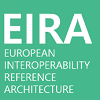
|
EIRA ensures technological neutrality as it does not impose the use of any specific technology when implementing the solution architecture. |

|
As it encourages Member States to identify their needs and choosing the most appropriate way of enabling eSignatures, eSignature does not impose any technology specific solution. |

|
By being based on open specifications, the ESPD exchange data model ensures technological neutrality. |

|
Being an open source software, eTrustEx does not impose any technology-specific solution. It also allows for further adaptations and improvements. |

Location Framework Blueprint
|
The EULF Blueprint does not stipulate the use of any specific solution or software, but rather encourages the use of standards to ensure that data is easily transferrable (e.g. EULF Blueprint Recommendation 5 on standards based procurement, Recommendation 10 on common architectural standards and Recommendation 12 on use of geo and ICT standards, including use of open ICT standards to avoid vendor lock-in). |

|
The common specifications and the common European data model for the representation of powers and mandates does not impose the use of any software to exchange data. |
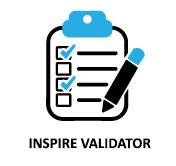
|
The INSPIRE reference validator allows public administrations to test their data sets, network services and other solutions to ensure that they are INSPIRE compliant. On its own, it does not impose any technological solution. |
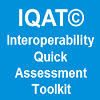
|
The IQAT assesses the extent to which the effectiveness and efficiency of different solutions as well as different technological options considering user-needs, proportionality and balance between costs and benefits were evaluated. |
| Joinup provides a 'library' of open source solutions available to public administrations, thus trying to promote a technology-neutral approach. | |

|
The ESS Service Catalogue offers a list of statistical services, rather than software solutions. Hence, by reusing it, national statisticians can ensure technological neutrality. |
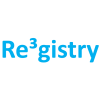
|
The Re3gistry enables the reuse of software, as it allows for the same software to be used for multiple sets of reference codes used in different applications. |

|
Ref2link is based on W3C or de facto web standards (XML, XHTML, JavaScript, regexp) and allows a technology neutral integration mode through web services. |

|
The Reference Architecture only consists of recommended building blocks and core elements that could be used when developing a system for eDocuments, hence it does not impose any technological solution. |
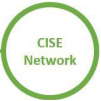
|
By developing common specifications and service models, rather than a system, CISE, and in turn its users, remains technologically neutral. |

|
By being a standard architecture, consisting of key building blocks, ESS Statistical Enterprise Architecture does not inherently promote the use of any particular software, hence ensuring technological neutrality. |

|
By consulting the TES Cartography, public officials can select the most appropriate solutions to citizens', business' and their own needs. |

|
The Sharing and Reuse Framework encourages the use of open source software, which is not proprietary. |
|
TIMAPS solution v1.0.0 |
Question D14 of the Service Delivery section of the TIMAPS questionnaire assesses whether a digital public service is dependent on specific technologies e.g. RPC, CORBA or if it uses neutral technologies that do not impose any specific options and therefore can operate on a variety of technological platforms and can be used easily by other public services. Furthermore, question C6 of the Service Consumption section of the TIMAPS questionnaire assesses to which extent the public service depends on specific technologies and standards while consuming services from other services. |





